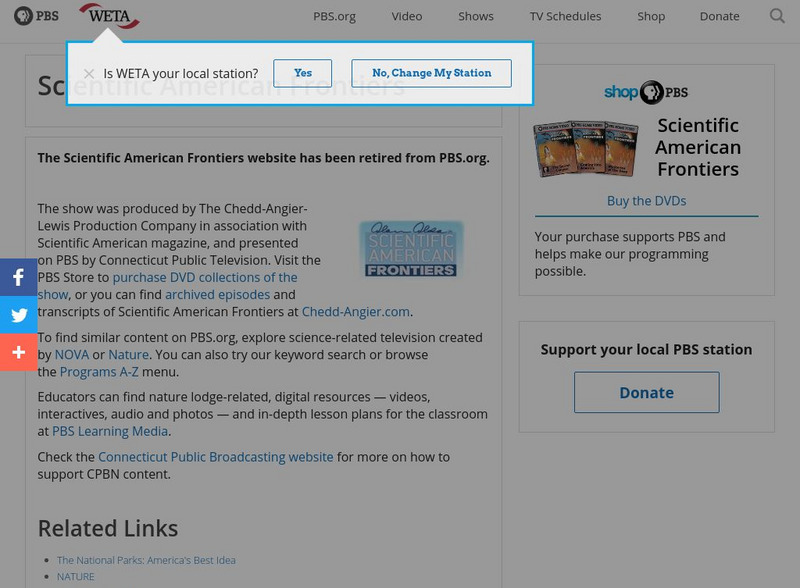Curated OER
Erosion: Changing the Face of Earth
Fourth graders explore how the landscape of the planet can be changed by different elements of wind, water, ice and chemicals through hands-on activities. They examine pictures of areas around town and discuss anything they think is out...
Curated OER
Keeping Our Surroundings Clean
Students define the word environment. In this environmental awareness activity students, orally make a list of at least 6 ways to keep our environment clean. Students individually create posters that show how to keep the environment...
Curated OER
Heat and Light Come From Various Sources
First graders study heat and light and how they come from various sources. They list sources of heat and light and identify the different energy sources as heat, light, or both heat and light.
Curated OER
Rollin’ on the River: Identifying Jargon
Students identify jargon in poetry, prose and fiction. In this literature lesson, students will read selections from Mark Twain and identify figurative langauge, focusing on jargon.
Curated OER
The Parts of an Insect
Students examine various insects. They discuss the parts of an insect and the environments in which they live. Students explore the importance of insects to our environment. They draw an interpretation of their insect and label its parts.
Curated OER
Solution Concentration
Students determine differences in concentrations. They have to state the problem they feel exists, consider possible solutions, and develop a plan to come up with for containers whose labels have fallen off. Students base this off the...
Curated OER
Gyrocopters-Producing Rotary Motion
Students demonstrate rotary motion by practicing with gyrocopters. In this physics lesson students work in groups to construct a gyrocopter and explore how physics effect it torque and inertia.
Curated OER
Flame Test
Students conduct a flame test on different substances. In this chemistry lesson, students predict the element present based on the color emitted during the flame test. They explain how different elements produce different colors.
Curated OER
Green Leaves
Third graders, after having conducted one experiment three times, record their observations results in a chart. They predict what hidden colors they believe that a leaf holds. Students record their predictions in their science note books...
Curated OER
Smog City - Part I
Pupils apply an interactive smog visualization application, Smog City to see how ozone levels are related to population levels and emissions. They study associated vocabulary and complete a worksheet.
Curated OER
Oceanography
Fifth graders study the topography of the ocean floor. They determine its ever changing nature as they examine currents and trade winds. They write paragraph describing how the winds might affect land formations after the discussion of...
Curated OER
Sticky Books
Fourth graders investigate items that are magnetic and those that are not. They determine the properties of the magnetic items. They create a digital book that demonstrates what they have learned about magnetism.
Curated OER
Am I Sticky
Fourth graders become familiar with magnets and their properties. They investigate what items are magnetic and non-magnetic and make generalizations about the properties. They utilize technology to develop an interactive digital book.
Curated OER
Sink or Float
Students construct clay boats and predict whether the boats will sink or float. Students will hypothesize what caused the boats to sink or float.
Texas Education Agency
Texas Gateway: Scientific Investigation and Reasoning: Models
This tutorial explores why the use of models in science is important for research and explanation of the natural world.
Exploratorium
Exploratorium: Microscope Imaging Station: Model Organisms
Using model organisms is very important in scientific research. This lesson plan will help students see why the zebrafish, sea urchin, and fruit fly are commonly used.
Exploratorium
Exploratorium: Microscope Imaging Station: Broken Hearts
Zebrafish are used to study heart abnormalities. This lesson plan helps students understand how and why they are important scientific models. Includes handouts.
Sophia Learning
Sophia: Making Models
This lesson will explain why scientists often use models and will demonstrate how to make a scale model of an object.
Columbia University
Scientific Background on the Indian Ocean Earthquake and Tsunami
This site features information and related links that can be used by students and scientists to understand the events that led to the December 2004 Indian Ocean tsunami.
PBS
Pbs Teachers: Scientific American: Spiders! Spin, Spin, Spin
Investigate the use of computers to simulate spider behaviors to learn more about how and why spiders build webs. Build a model of a web to compare your eyesight and dexterity to a spider's, then compare the elasticity and strength of...
TeachEngineering
Teach Engineering: Animals and Engineering
Students are introduced to the classification of animals and animal interactions. Students also learn why engineers need to know about animals and how they use that knowledge to design technologies that help other animals and/or humans....




















